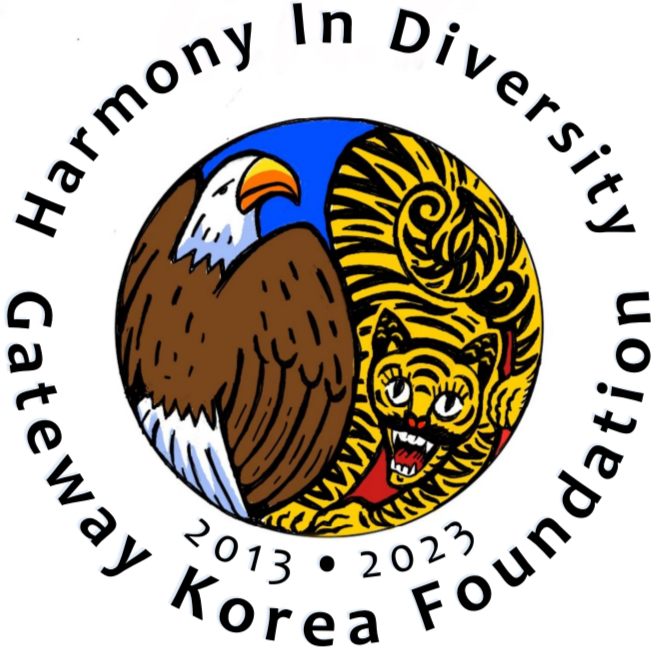Passport to Korea: Sunday, September 29th
Presented in collaboration with the St. Louis Art Museum as part of its Family Sundays program, this event offers a chance to make traditional Korean arts and crafts, learn about the Korean alphabet, play games and more. Hear Korean stories in the storytelling corner. Free tours of the museum’s Korean art collection will also be offered.
Admission is free.
I p.m.-4 p.m.
1 Fine Arts Drive
St. Louis, MO 63110
Program
1:00 – 4:00 pm Pojagi Art (Grigg Gallery)
1:00 – 4:00 pm Learn the Korean Alphabet & Korean Traditional Flower painting (Sculpture Hall)
2:00 – 2:30 pm Standing Drum (Sculpture Garden)
2:00 – 2:30 pm Story Telling : Heungbu and Nolbu Brother (Gallery 225)
2:30 – 3:00 pm Korean Folk Song (Sculpture Hall)
Arirang Song Solo by Susan (기현) Crecelius
Folk songs by Columbia Youth Choir
2:30 – 3:00 pm Family Tour of Korean Gallery (Meets in Grigg Gallery)
2:45 – 3:30 pm Demonstration of Korean Games (Sculpture Hall)
3:00 – 4:00 pm K-Pop Dance by Pyro (Sculpture Hall)
Pojagi Art
The art form called “Pojagi” (보자기) started about 2000 years ago in Ancient Korea. Pojagi was made by hand stitching fabrics like ramie (which is similar to hemp or (linen), cotton, and silk formed into 14” squares to wrap and carry things. Even today, it is said the Korean parliament uses Pojagi to transport documents. Women took old clothes and repurposed them into these wrapping cloths. It was a highly creative way to do improvisational designs from old clothes, scraps, and multiple fabrics, using only what was available to them. They would turn down the fabric from the top ¼ inch and crease it with a Clover Hera Tool. When the crease was made all the way across the fabric piece, the top is picked up folded inward and hand stitched. Then hand-stitching is done along that fold. From the side, the seam is folded down toward each other. The result is what we call “Flat Fell Seams”. The best way to describe them is they are a row of 2 seams with no fraying edges, finished both inside and outside. (Like the seams on your jeans!). Although it was used by all economic classes in Korean history, Pojagi had categories based on the fabric and who the recipient of the cloth would be. For instance, a princess would receive a lined Pojagi possibly made with silk, where as a commoner may be something coarser like ramie or hemp. They were called different names by type as well. Today, pojagi is used as screens, curtains, wall hangings, or sometimes fabric sewn on top of each other, irregular shapes and sizes, even repurposed clothing. Pojagi is a great project to do whatever design appeals to you.
Storytelling: Heungbu and Nolbu
Heungbu and Nolbu Brothers (Korean: 흥부와 놀부) is a Korean story written in the late Joseon Dynasty (1392–1897). The identity of its writer is unknown; it was passed down through generations. It is now told as a popular bedtime story for Korean children.
“Many, many years ago, a farmer had two sons Heungbu and Nolbu. Heungu, the younger son was kind and gentle and everyone in the village loved him. But Nolbu, the older son was greedy, mean and selfish………” Please come to hear a whole story.
Standing Drum
K-Pop Dance
K-Pop (abbreviation of Korean pop; Hangul: 케이팝) is characterized by a wide variety of audiovisual elements. Although it generally classifies "popular music" within South Korea, the term is often used in a narrower sense to describe a modern form of South Korean pop that is influenced by styles and genres from around the world, such as Western pop music, rock, experimental, jazz, gospel, Latin, hip hop, R&B, reggae, electronic dance, folk, country, classical, and Japanese pop music on top of its uniquely traditional Korean music roots. The more modern form of the genre emerged with one of the earliest K-pop groups, Seo Taiji and Boys, forming in 1992. Their experimentation with different styles and genres of music and integration of foreign musical elements helped reshape and modernize South Korea’s contemporary music scene. Modern K-pop "idol" culture began with the boy band H.O.T. in 1996, as K-pop grew into a subculture that amassed enormous fandoms of teenagers and young adults. After a slump in early K-pop, from 2003 TVXQ and BoA started a new generation of K-pop idols that broke the music genre into the neighboring Japanese market and continue to popularize K-pop internationally today. With the advent of online social networking services and Korean TV shows, the current global spread of K-pop and Korean entertainment, known as the Korean Wave, is seen not only in East and Southeast Asia but also Latin America, India, North Africa, the Middle East and the Western world, gaining a widespread global audience.
Back to Past Events



